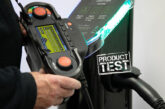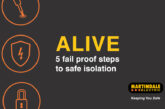
Pete (Monty) Monfort, Director of Arena Training Centre and Monty Electrics, takes a look at how computers are impacting our industry.
Artificial intelligence is the process by which computers are designed to carry out tasks that typically require human intelligence and problem solving capabilities. However, AI doesn’t have the capacity to reason, thus problem solving is only possible for relatively simple and clearly defined processes often using visual perception, speech recognition and basic decision making.
Whilst many folk are concerned that such technology will eradicate the need for people to carry out work, this is incorrect. Its use is more about enhancing productivity and complementing the work of people. Its development cannot replace skilled trade persons and embracing it is simply adding another tool to your arsenal.
Examples of AI that can be found in the electrical industry include:
Solar panel designs
In the renewables sector AI is used to develop solar panel layouts and model scenarios. The software searches for environmental data and makes predictions to calculate peak performance designs.
Data collection and proactive maintenance
Power companies utilise unmanned drones with thermal and visual sensors to collect data on supply equipment then directs engineers to potential problems and shifts the work from reactive to proactive engineering.
Production and machinery
In manufacturing, production lines utilise sensors that monitor temperature, vibration, motion etc. AI algorithms can analyse the data, predicting machine failure and identifying system stoppages on unmanned parts of the line.
Heating systems and energy efficiency
Heating systems use AI to monitor energy usage, occupancy patterns, weather forecasts and environmental conditions in order to seek and maximise energy use and efficiency.
Additionally, forward-thinking, modern electrical businesses can also start to benefit from AI – now and in the future.
Here’s four ways that AI can improve your business:
1. Increased productivity
Project/business management software has the potential to arrange scheduling, appointments and organise tasks efficiently to maximise the impact of your manpower.
2. Better customer service
Interactive portals or ‘chatbots’ can assist customers in securing services, getting quotes and troubleshooting.
3. Developing text, publications, marketing and training materials
AI can help you write your website, produce written products for your business and develop instructions and explanations. This will be a literal ‘godsend’ for those of us who struggle with spelling issues or dyslexia.
4. Analysing data
Checking testing data is laborious and repetitive but AI software can carry out thousands of checks across multiple data sets, allowing you to work on potential issues without spending hours trawling through data.
One to look out for
One company that I’d recommend you familiarise yourself with is TCW – a British firm, whose CEO, Ryan Dempsey, has developed a software system that can take all the work out of checking certification across thousands of assets.
This will allow your team to focus on the bit that AI can’t – the hands-on skilled intervention that electricians and other trades provide. The remarkable bit about this software is that it can analyse data sets over time and look for and learn patterns, so it becomes more efficient over time. Now that’s really clever!
LET’S PUT IT TO THE TEST
The following test certificate has 10 x circuits that have been installed in a domestic property. Each circuit has 1 x concern. See if you can identify them.
On completion, think about how much time you’ve taken to check this data and consider how something like the TCW software might do this for you across thousands of data sets in only a few seconds, permitting you to focus on what is important. The answers can be found below.
ANSWERS
Circuit 1: r2 is too high and should be 1.03 ohms.
Circuit 2: An AC type RCBO has been selected. Sockets may have equipment plugged in which may leak DC and thus a type A is more suitable.
Circuit 3: A 10 kW shower has a design current of 43.5 A and therefore a 40 A mcb is undersized. Circuit 4: Reference method 103 reduces the current carrying capacity of 2.5 mm twin and earth to 13.5 A so the selected protective device of 20 A will not provide protection.
Circuit 5: The maximum Zs has been incorrectly recorded and should be 2.19 ohms.
Circuit 6: Sockets in a domestic setting require RCD protection and this has been omitted.
Circuit 7: The R1R2 value is expected to be 0.02 ohms at 20 ̊C. 0.25 ohms is therefore a very high reading.
Circuit 8: Insulation resistance is less than 0.5 Mohms which is less than the minimum required of 1 Mohm.
Circuit 9: RCD fails as it must disconnect quicker than 300 ms.
Circuit 10: Zs is too high.
Find more industry feature articles here










